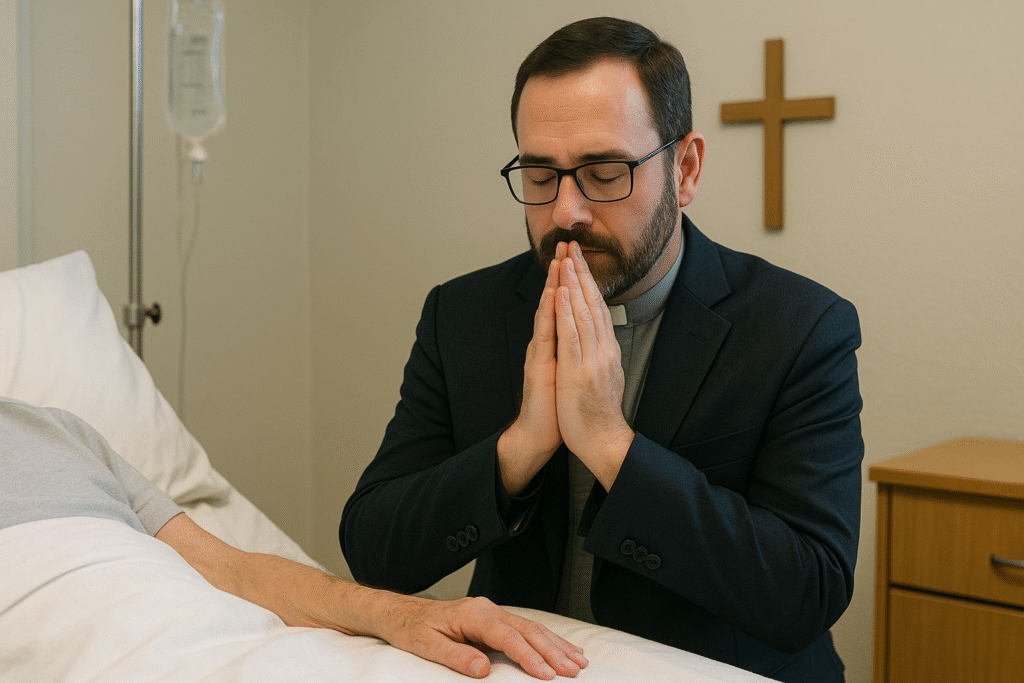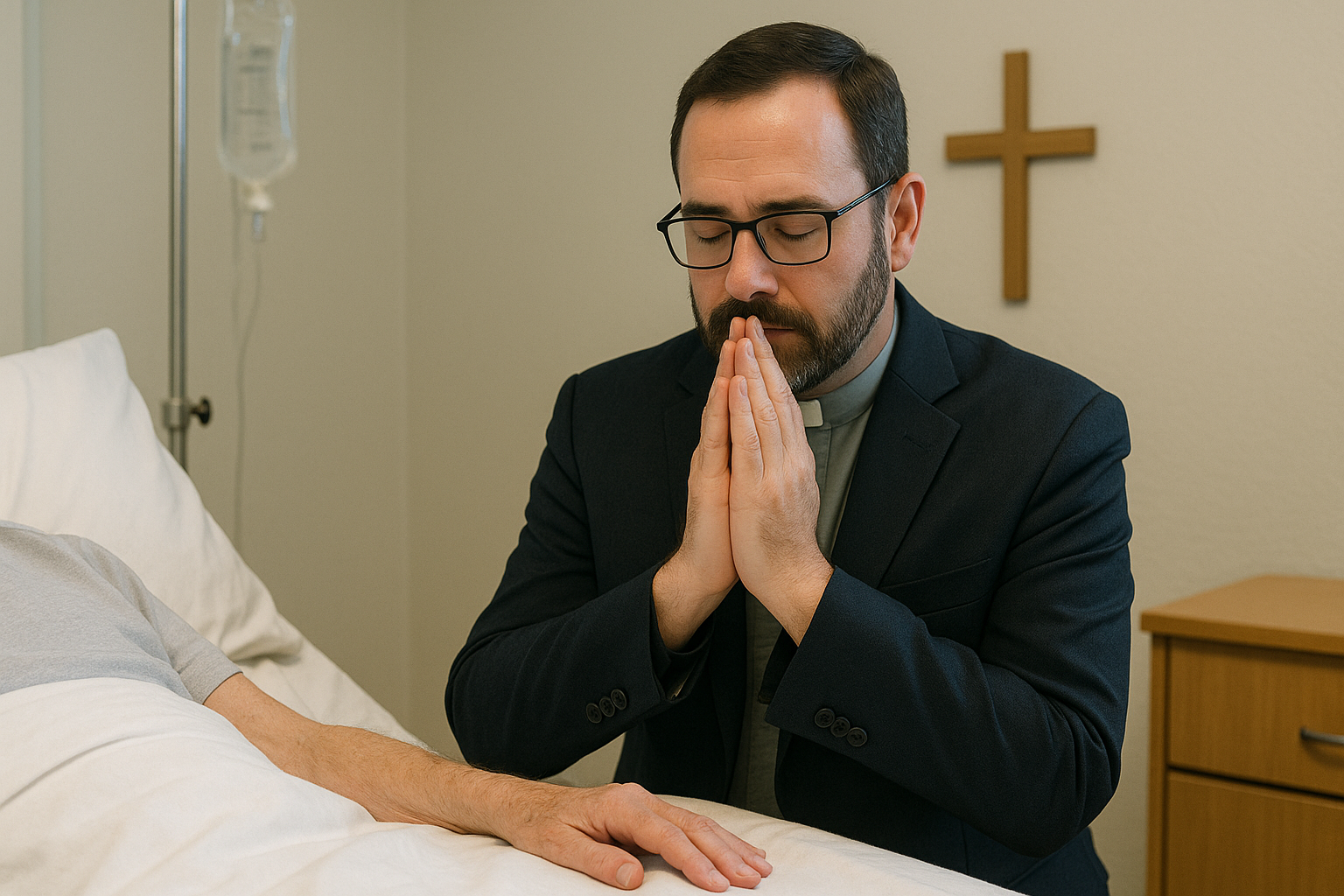Clinical chaplaincy is one of the most demanding yet most impactful settings for spiritual care. At the hospital bedside, in moments of crisis, or in the tension of medical staff burnout, chaplains become bridges of faith, hope, and comfort. This article explores the key deliverables, compliance requirements, and service models of hospital and clinical chaplaincy.

Key Deliverables
- Bedside Visits
Offering presence, prayer, and compassionate listening at the patient’s side. - Crisis & Grief Support
Providing spiritual and emotional care during emergencies, trauma, or sudden loss. - Family Conferencing
Facilitating difficult conversations between doctors, patients, and families with empathy and respect. - Staff Care
Supporting healthcare professionals through listening, debriefing, and prayer. - On-Call Coverage
Responding to urgent calls for emergencies and critical cases. - Sacramental / Ceremonial Support
Administering sacraments, rituals, or liturgical prayers when requested and permitted.
Compliance Requirements
- HIPAA – Protecting the confidentiality of patient information at all times.
- Hospital Onboarding & Badges – Completing training, credentialing, and orientation required by each institution.
- Charting (when required) – Documenting chaplaincy encounters professionally and briefly in hospital records according to policy.
clinical chaplain is both a spiritual minister and a trained professional who understands the hospital environment.
Service Models
- Retainer – Weekly Rounds
Scheduled visits across hospital units on a weekly basis. - On-Call 24/7
Full availability to respond to emergencies or trauma situations. - Per-Diem
Providing chaplaincy on a daily basis when requested for specific needs.
Each model is based on formal agreements between chaplains and hospital systems.
Biblical Reflection
Jesus said: “I was sick, and you visited me” (Matthew 25:36).
Hospital chaplaincy is rooted in this command: to see the face of Christ in every patient, family member, and healthcare worker. Like the Good Samaritan, chaplains stop along the road of suffering to bind wounds—both visible and invisible.
Hospital & Clinical Chaplaincy is not simply a support function; it is a prophetic act of the Kingdom embodied in the place where life and death meet. Our mission is to serve with excellence, follow institutional compliance, and reflect the love of Christ in every encounter.





One response to “Serving at the Bedside of Pain and Hope”
Ready to save life for the lord